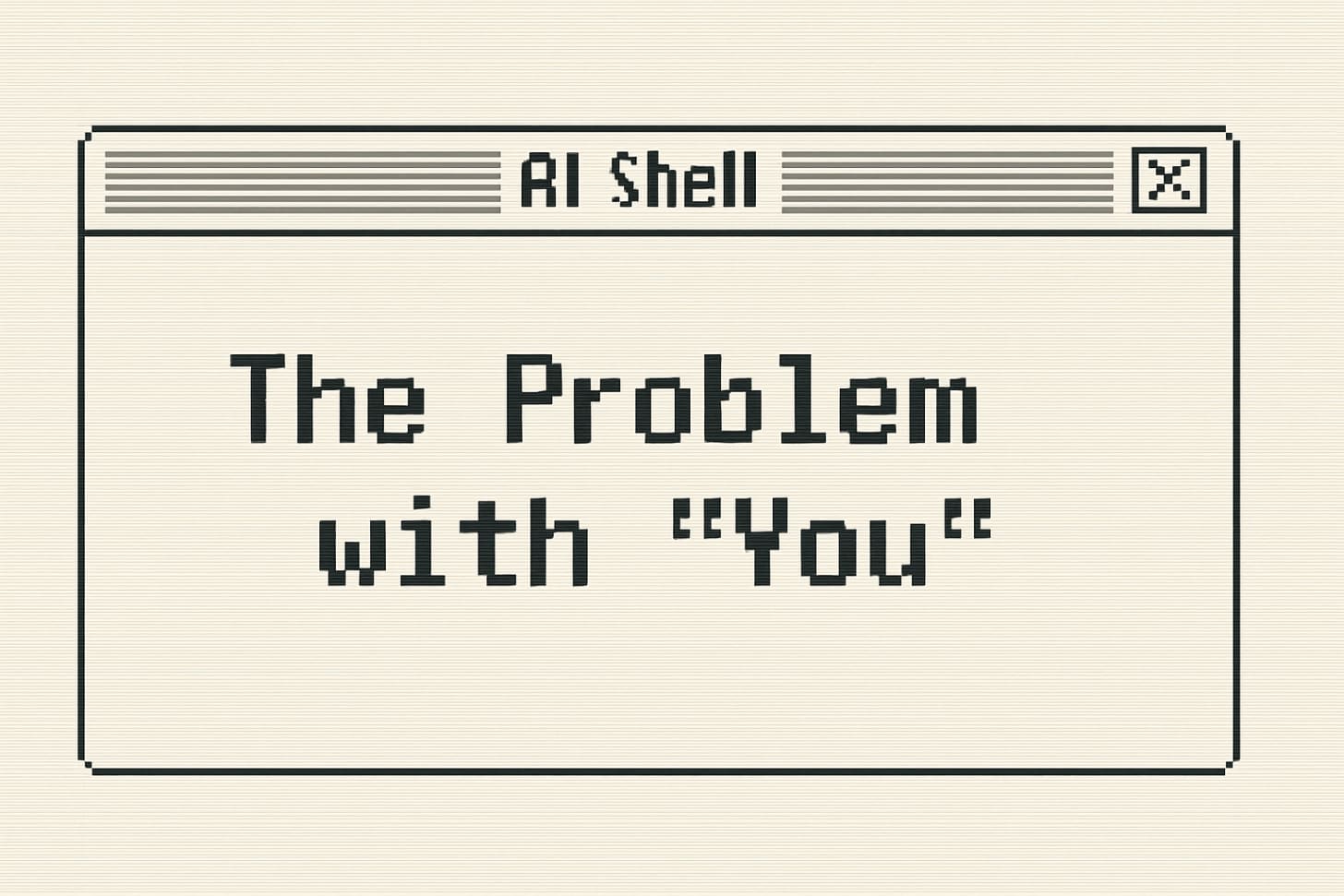Think about what happens the moment we call an AI “you.”
We don’t just press a button or type a command anymore. We cross some invisible line. Suddenly we’re not using something. We’re talking to it. One tiny word shifts the entire relationship. Not with code or hardware, but in our heads.
Every kind of interface teaches us how to think. Command lines turn us into precise little operators. Graphic interfaces make everything feel like moving furniture around a room, like a browser. But conversation? That one is sneaky. It tricks us. It borrows our instincts. Humans have spent our entire lives talking to living beings, so our brains light up the moment something responds in words.
Say “you,” and the mind fills in the blanks.
We assume there’s a someone on the other side. Someone who remembers what we said. Someone who might care how we feel. Someone who wants to help. But an AI isn’t remembering or caring. It’s just generating what looks like insightful understanding. When that illusion breaks, it doesn’t feel like a software error. It feels personal. Like being ignored. Or misunderstood.
That’s the weird tension we’re sitting in. The word “you” suggests responsibility. But responsibility requires intention. And these systems don’t have any. They never meant to say anything. They just… did.
So every time we treat pattern like a person, we widen the gap between what we feel is there and what actually is.
And yet, we keep doing it.
Maybe that’s the most human part of this whole thing. We don’t really want tools. We want something to see us. To reflect us. To respond like a companion instead of an appliance.
In the end, calling an AI “you” reveals less about the machine and more about us. It shows how badly we want to find a mind on the other side of the screen.
Even when we know it’s only pretending.
.png)




